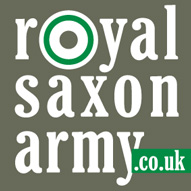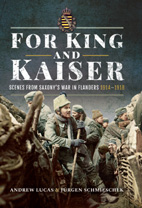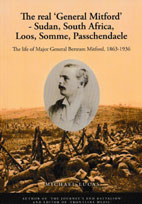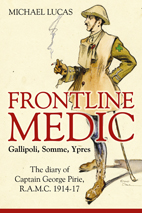Biographical note
Curt (sometimes spelled 'Kurt') Penther was born on 4th June 1892 at Löbau in the Oberlausitz. His occupation is recorded only as 'Kaufmann' (businessman / merchant). Evidently his family was well off, as he chose the prestigious but expensive option of service as a self-financing Einjährig-Freiwilliger (one-year volunteer) in the ultimately successful hope of becoming a reserve officer. Initially trained at the barracks of Kgl. Sächs. 4. Infanterie-Regiment Nr.103 (IR 103) in Bautzen, he was part of the initial intake for the newly raised RIR 242 in August 1914.
Of the four eyewitnesses from XXVII.RK whose personal accounts of the First Battle of Ypres are featured in Fighting the Kaiser's War, three were wounded and two shot in the head - a testament to the lethal marksmanship of the experienced British regulars these hastily trained regiments were fighting. Penther survived with relatively light wounds, and was sent on an Offiziers-Aspiranten-Kursus (a training course for prospective officers), returning to the regiment in autumn 1915 with the rank of Vizefeldwebel. He soon established a formidable reputation as a fearless leader of trench raids and forward patrols, and was finally commissioned as a Leutnant der Reserve at the end of 1916. Having already been awarded the Militär St. Heinrichs-Medaille in silver as an NCO, in August 1918 Penther was honoured with the officer's Ritterkreuz of the Militär St. Heinrichs-Orden, the highest Saxon (and oldest German) order for valour:
On 24th June 1918 in the sector of the 53. Reserve-Division at Nouvron west of Soissons, the proven and dashing trench raider Leutnant Penther succeeded in penetrating 600m deep into the enemy trench system. He was forced to abandon an attempt to make off with a machine-gun in the face of strong numerical superiority following a fierce hand-grenade battle, having inflicted substantial bloody losses on the enemy.
In the early hours of 2nd July together with his assault troop he succeeded in traversing the enemy's [wire] obstacle line undetected. As the first to leap into the [enemy] trench he personally overpowered a Frenchman. He then held approaching enemy reinforcements at bay with hand grenades. Only after he knew that [all of] his men had reached safety did he return to our own trenches as the last, together with two prisoners. Leutnant Penther had already been decorated with the Militär St. Heinrichs-Medaille in silver in 1916.
He was still with RIR 242 when 53. Reserve-Division and all of its infantry regiments were disbanded in late September 1918 due to catastrophic losses, and spent the final weeks of the war with Reserve-Infanterie-Regiment Nr.103 (RIR 103).
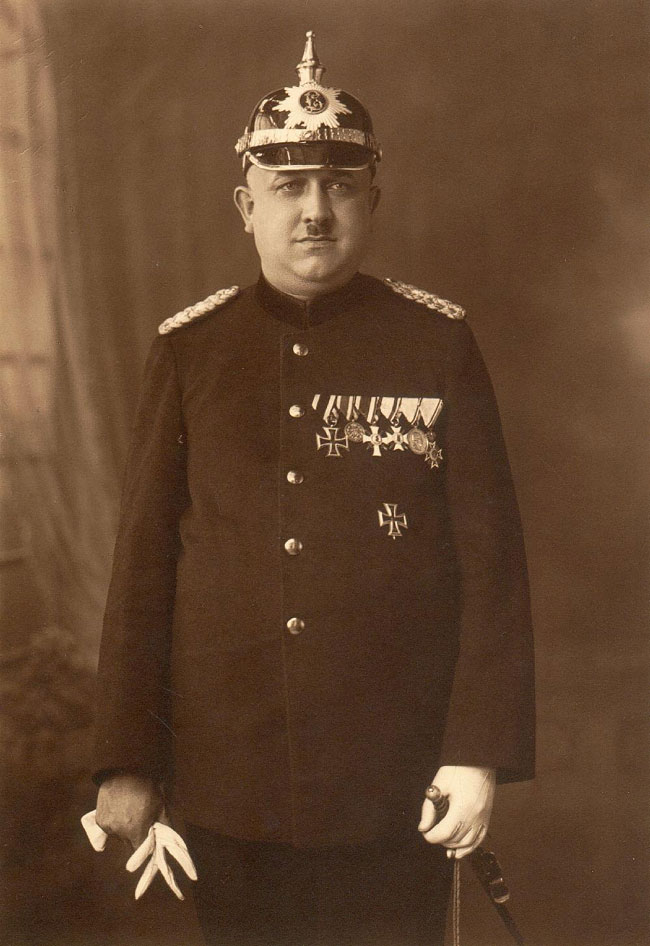
Above: Curt Penther in later life as Branddirektor (fire chief) of Löbau, wearing his impressive array of WW1 decorations.
After demobilisation Curt Penther returned to civilian life and joined the fire brigade, rising to the position of Branddirektor in Löbau. During WW2 he was recalled to service and is known to have reached the rank of Hauptmann, though his unit has not been identified.
Our primary source is a large bundle of Penther's letters to his family, acquired by Jürgen many years ago when the late officer's effects (including his medals) appeared at auction in Germany. What we know of him is derived almost entirely from these letters, supplemented by Verlustlisten and his citation for the Militär St. Heinrichs-Orden. We would be most interested to hear from anyone in possession of other parts of Penther's legacy, especially photos from his military service.
- << Prev
- Next
